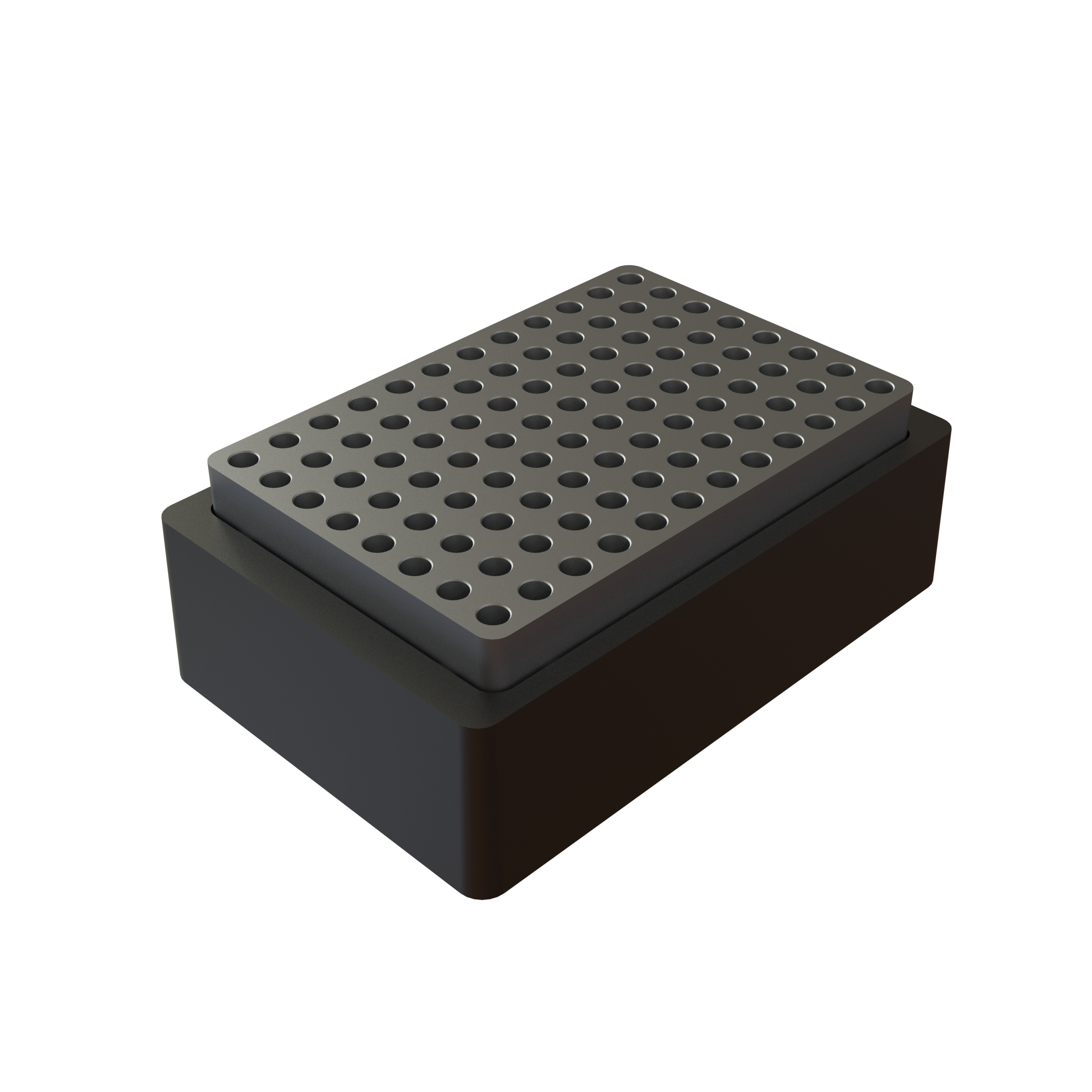Myra for Bead Cleanup
Bead cleanup can be used for many applications, including:
Size Selection in Cloning: When cloning DNA fragments into vectors, size selection can be crucial for isolating fragments of interest, ensuring that only DNA pieces of the desired size are ligated into the cloning vector.
Molecular Diagnostics: In diagnostic applications, bead-based cleanup can be used to enrich for target DNA or RNA fragments of specific sizes to improve the sensitivity and specificity of the diagnostic process.
CRISPR-Cas9: Bead cleanup is used for techniques like CRISPR-Cas9 genome editing workflows. This includes the preparation of donor DNA templates, the cleanup of CRISPR-Cas9 components, the selection of edited fragments for analysis, and optimization of delivery vectors.
Bead cleanup is a tedious and complex task, but the Myra liquid handling system is easy to use, accurate, fast, efficient, and cost-effective for this purpose. Because pipetting precision is user-dependent, it can introduce variability that may affect reproducibility. Thus, automation of bead cleanup guarantees consistent and precise protocol execution, reducing the likelihood of user errors. This enhanced reproducibility is crucial for maintaining data quality and consistency.

Principle
DNA cleanup can be used for different genomic applications like NGS, PCR, Cloning and Fragment Analysis. It utilizes Solid Phase Reversible Immobilisation (SPRI) paramagnetic bead technology to selectively bind nucleic acids by type and size, making it automation-friendly. The automation of the cleanup process provides a standardized workflow for improved results as well as a reduction in costly errors and hands-on time.

Bead Cleanup on Myra
Browse a comprehensive table of all available templates on Myra, complete with direct links to specific MyraScript pages. Access protocol documentation via a dedicated PDF link. Verified options include templates for BMS, Partner (kit company), and the Myra community (customers).
| Kit | Verified By |
|---|---|

| BMS |

| BMS |

| BMSCommunity |

| BMSCommunity |

| BMSCommunity |

| BMSCommunity |
Case Study: CleanNGS Bead Cleanup
The efficiency of DNA purification using CleanNGS beads (CleanNA, Netherlands) was evaluated on the Myra liquid handling system in comparison to manual purification.
Experimental Setup
Bead Cleanup Protocol
1. Pipette 22 uL of beads into a 200 uL PCR plate
2. Thoroughly mix beads with the sample to bind DNA
3. Capture beads using magnets (3 min)
4. Perform 2x wash steps with 100 uL of 80% Ethanol to remove impurities and contaminants
5. Air-dry to remove residual traces of Ethanol (5 min)
6. Pipette 21 uL of elution buffer into the beads and release the magnets
7. Resuspend beads and mix with the elution buffer to release DNA
8. Capture beads using magnets (3 min)
9. Elute 15 uL of purified DNA into new tubes
For the experiment, a PCR product (550 bp) was purified in sets of 8 replicates, using the two different methods in parallel (Myra and manual). For the manual purification, the same protocol was performed by hand. Purification yield and purity were compared using the Qsep100 Capillary Electrophoresis System and S2 Quantitative Cartridge (BiOptic Inc., Taiwan, Figure 1). All experiments were conducted by our Swiss partner Labgene Scientific.

Results
The data clearly showed that Myra achieved significantly higher yields of purified PCR product compared with the manual method (Figure 2).
Reproducibility of yield was also tighter when using the Myra.
Fragment analyzer results showed correct fragment sizes across all 16 PCR samples purified using both the Myra and manual methods (Figure 1).
The results highlight the advantages of using Myra for bead cleanup, as it not only increases the DNA yield but also makes the results more accurate and consistent. Myra automation reduces operator stress levels and allows you to focus on your research.

Additional Accessories
The following accessories are recommended for achieving library prep on the Myra liquid handling system.

Myra 96 Well Magnetic Station
MYRA-MAGS96
Designed to provide automated magnet control for up to 96 x 0.2 mL tubes, including strips of 8, and 96 tapered well plates (including fully skirted, unskirted and semi-skirted plates). Magnets are applied to groups of 24 wells at a time. Made from aluminium.

Myra 96 Well Cooling Block
MYRA-COOL96
Designed to provide passive cooling for 96 x 0.2 mL tubes including strips of 8, and 96 tapered well plates (including fully skirted, unskirted and semi-skirted plates).